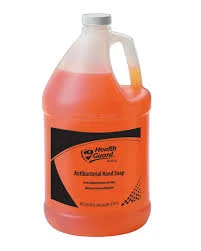limescale inhibitor
Understanding Limescale Inhibitors Protecting Your Water Systems
Limescale, a hard, chalky deposit primarily composed of calcium carbonate, is a frequent problem in water systems across various settings, from household appliances to industrial machinery. As water evaporates or is heated, minerals such as calcium and magnesium solidify and accumulate, leading to inefficient operations, increased energy costs, and damage to equipment. The imperative to manage limescale growth has led to the development and deployment of limescale inhibitors, which play a crucial role in maintaining system efficiency and longevity.
Limescale inhibitors can be broadly classified into two categories chemical and physical treatments. Chemical limescale inhibitors, typically known as threshold inhibitors, work by binding to the minerals present in water. This prevents them from crystalizing and forming deposits. Common substances used include polyphosphates and citrates, which alter the nucleation and growth processes of limescale, effectively keeping the minerals suspended in the water. This method is particularly effective in commercial settings, such as food and beverage production, where equipment cleanliness and operational efficiency are paramount.
On the other hand, physical limescale inhibitors utilize innovative technologies to alter the properties of the water itself, thus preventing limescale formation. Examples of physical solutions include electromagnetic and electrostatic devices that manipulate the water’s flow. These devices promote the formation of smaller crystals that do not adhere to surfaces, ultimately reducing buildup. This method has gained popularity in both industrial and residential applications due to its non-chemical nature, making it an environmentally friendly option.
limescale inhibitor

The effectiveness of limescale inhibitors often depends on the quality of water treatment and application suitability. It’s crucial to evaluate the specific conditions of the system, including water hardness, temperature, and flow rate, to select the most appropriate inhibitor. For instance, in areas with exceptionally hard water, a combination of both chemical and physical treatments may be necessary to achieve optimal results.
In addition to preventing damage, limescale inhibitors can contribute significantly to savings on maintenance costs and energy efficiency. Scale buildup can reduce the efficiency of heating elements, leading to increased energy consumption. By preventing limescale formation, these inhibitors can help maintain the efficiency of boilers, heaters, and other appliances, thereby reducing energy bills and extending the lifespan of the equipment.
While limescale inhibitors offer numerous benefits, it is essential to maintain a holistic approach to water management. Regular monitoring of water quality, along with periodic maintenance and cleaning, can further enhance the effectiveness of limescale inhibitors. Users should also be aware of the potential compatibility issues that may arise when using different types of inhibitors in conjunction with one another. Consulting with professionals in water treatment can provide valuable insights tailored to the specific needs of the system.
In conclusion, limescale inhibitors are indispensable tools for managing the challenges posed by hard water. By selecting the appropriate inhibitor and employing best practices in water treatment, users can protect their systems from the detrimental effects of limescale, ensuring optimal performance and longevity. As industries and households alike strive towards sustainability and efficiency, the role of limescale inhibitors becomes ever more significant in preserving essential water systems.
-
lk-319-special-scale-and-corrosion-inhibitor-for-steel-plants-advanced-solutions-for-industrial-water-systemsNewsAug.22,2025
-
flocculant-water-treatment-essential-chemical-solutions-for-purification-processesNewsAug.22,2025
-
isothiazolinones-versatile-microbial-control-agents-for-industrial-and-consumer-applicationsNewsAug.22,2025
-
scale-inhibitor-key-solutions-for-water-system-scale-preventionNewsAug.22,2025
-
organophosphonates-versatile-scale-inhibitors-for-industrial-water-systemsNewsAug.22,2025
-
scale-and-corrosion-inhibitor-essential-chemical-solutions-for-water-system-maintenanceNewsAug.22,2025





